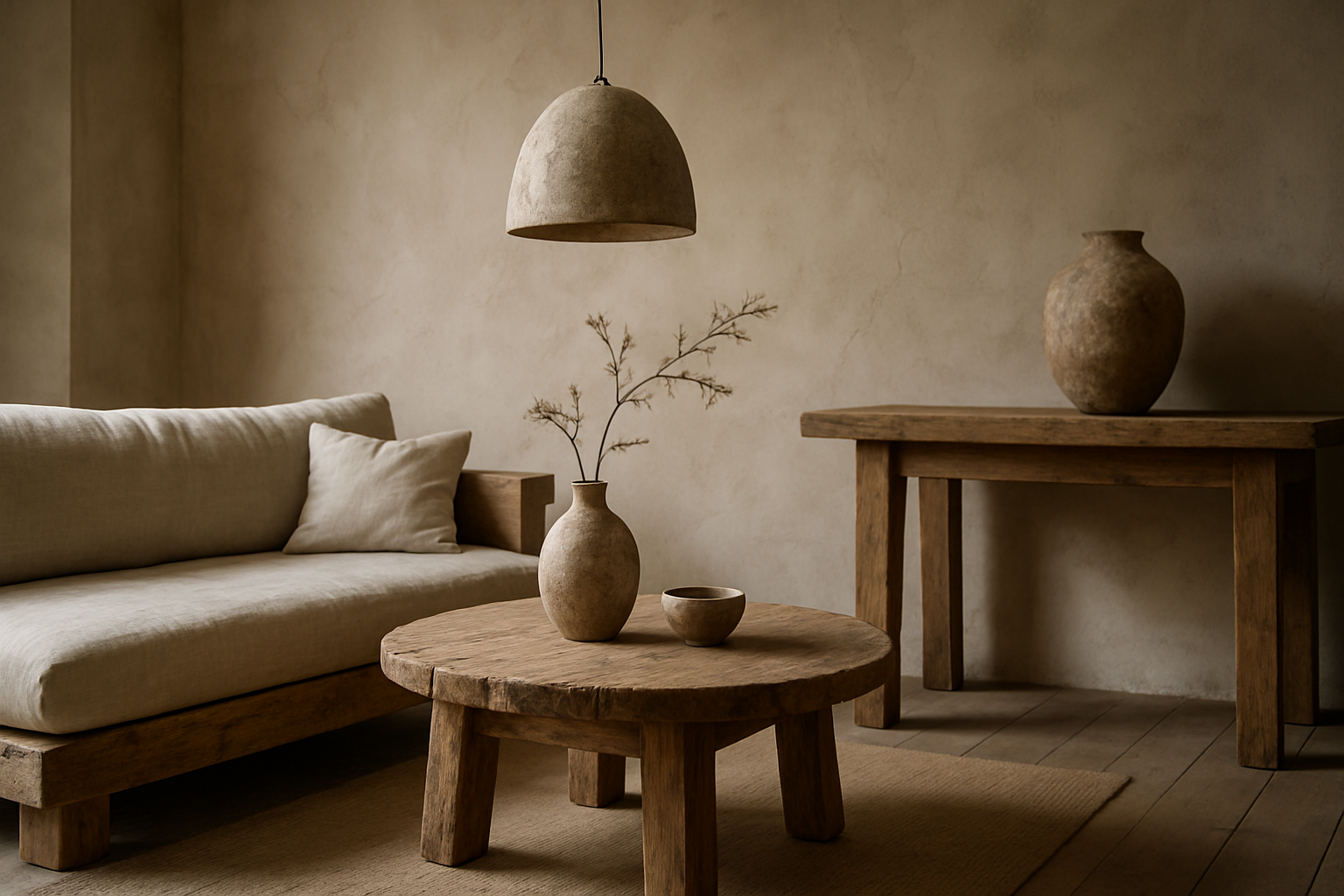Harmonizing Hygge and Wabi-Sabi: The Art of Imperfect Coziness
In the ever-evolving world of interior design, a captivating fusion is taking root: the blending of Danish hygge and Japanese wabi-sabi. This unexpected pairing marries Scandinavian coziness with the beauty of imperfection, creating spaces that are both comforting and thought-provoking. As homeowners seek refuge from the chaos of modern life, this hybrid approach offers a fresh perspective on what it means to create a truly welcoming home.

The Origins of Hygge and Wabi-Sabi
Hygge, pronounced hoo-gah, is a Danish word that defies direct translation but encompasses a feeling of coziness, contentment, and well-being. It emerged from Denmark’s long, dark winters, where creating warm, inviting interiors became crucial for emotional survival. Hygge involves surrounding oneself with comforting elements like soft textures, warm lighting, and intimate gatherings with loved ones.
Wabi-sabi, on the other hand, is a Japanese aesthetic philosophy rooted in Buddhist teachings. It embraces the imperfect, impermanent, and incomplete nature of life. In design, wabi-sabi manifests as an appreciation for natural materials, asymmetry, and objects that bear the marks of age and use. It encourages a mindful approach to living, finding beauty in simplicity and the passage of time.
The Synergy of Comfort and Imperfection
At first glance, hygge and wabi-sabi might seem at odds. Hygge often conjures images of pristine, perfectly arranged spaces, while wabi-sabi celebrates wear and tear. However, their underlying principles align more closely than one might expect. Both philosophies emphasize mindfulness, appreciation for the present moment, and creating spaces that reflect authentic living.
When combined, hygge and wabi-sabi create interiors that are both inviting and intriguing. The warmth and comfort of hygge soften the sometimes austere nature of wabi-sabi, while wabi-sabi’s embrace of imperfection adds depth and character to hygge’s coziness. This fusion results in spaces that feel lived-in and loved, rather than sterile or overly curated.
Key Elements of the Hygge-Wabi-Sabi Aesthetic
To achieve this harmonious blend, consider incorporating the following elements into your home:
-
Natural materials: Opt for raw woods, stone, and organic textiles that showcase their inherent textures and imperfections.
-
Soft lighting: Embrace the hygge tradition of candlelight and warm, diffused lighting sources to create a cozy ambiance.
-
Handcrafted items: Incorporate pieces made by artisans, celebrating the slight irregularities that come with handmade objects.
-
Weathered finishes: Instead of hiding signs of wear, showcase them as part of your decor, aligning with wabi-sabi principles.
-
Cozy textiles: Layer soft, inviting fabrics like wool, linen, and cotton to add warmth and comfort to your space.
-
Minimalist arrangements: Embrace simplicity in your layouts, allowing each piece to breathe and be appreciated fully.
-
Natural elements: Bring the outdoors in with plants, branches, and stones, connecting your interior to the natural world.
Practical Application in Home Design
Implementing the hygge-wabi-sabi aesthetic requires a thoughtful approach to each room in your home. In the living room, for example, you might pair a well-worn leather armchair with a soft, chunky knit throw. The juxtaposition of the chair’s patina with the throw’s comforting texture embodies both philosophies.
In the kitchen, open shelving displaying a collection of handmade ceramics can create a warm, inviting atmosphere while celebrating the beauty of everyday objects. Choose pieces with subtle variations in glaze or shape to embrace wabi-sabi’s appreciation for imperfection.
Bedrooms benefit greatly from this fusion, as both hygge and wabi-sabi emphasize creating restful, nurturing environments. Opt for natural fiber bedding in muted tones, and incorporate elements like a gnarled wooden bedside table or a asymmetrical ceramic vase filled with wildflowers.
The Psychological Benefits of Hygge-Wabi-Sabi Spaces
Beyond aesthetics, the combination of hygge and wabi-sabi can have profound effects on our well-being. By creating spaces that are both comforting and thought-provoking, we encourage a more mindful approach to our home environments. The hygge elements satisfy our need for security and warmth, while wabi-sabi’s embrace of imperfection can help alleviate the stress of striving for an unattainable ideal of perfection.
This fusion also promotes a more sustainable approach to home decor. By valuing objects that age gracefully and finding beauty in imperfection, we’re less likely to discard items simply because they show signs of wear. This mindset aligns with growing concerns about overconsumption and waste in the design world.
Challenges and Considerations
While the hygge-wabi-sabi aesthetic offers a refreshing approach to home design, it’s not without its challenges. Balancing comfort with a celebration of imperfection requires a delicate touch. It’s easy to veer too far in one direction, ending up with a space that feels either too precious or too austere.
Additionally, this approach may not resonate with everyone. Some may find the idea of showcasing imperfections at odds with their desire for a polished, magazine-ready home. However, for those willing to embrace a new perspective, the hygge-wabi-sabi fusion offers a unique opportunity to create spaces that are both deeply personal and universally inviting.
As we navigate an increasingly complex world, the appeal of homes that offer both comfort and authenticity continues to grow. The fusion of hygge and wabi-sabi provides a timely response to this desire, creating interiors that nurture our need for coziness while celebrating the beauty of life’s natural imperfections. By embracing this hybrid approach, we can create living spaces that are not just visually appealing, but also emotionally resonant and deeply satisfying.




